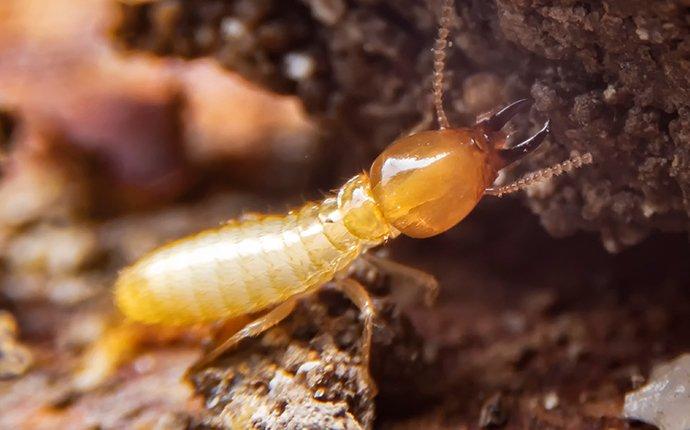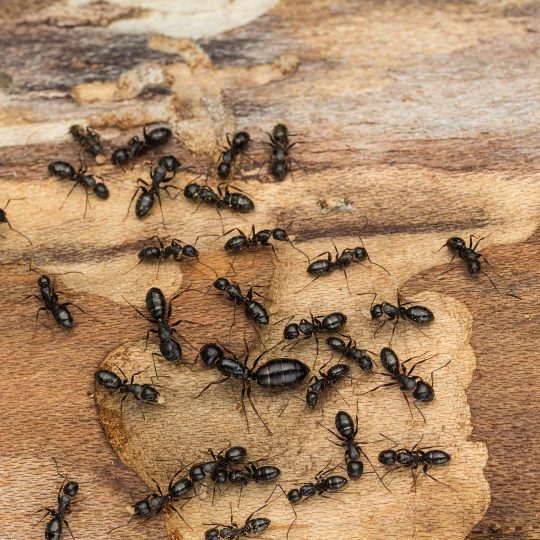Environmental Impact of Insect Control: Balancing Performance With Sustainability
The ecological influence of bug control is a crucial problem that needs a fragile balance in between attaining efficiency in taking care of pests and making certain sustainability of our communities. From the usage of hazardous chemicals that seep right into our soil and water to the unintended effects on non-target varieties, the consequences of standard bug control methods are far-reaching.
Damaging Chemicals in Parasite Control
The usage of hazardous chemicals in pest control postures considerable environmental and wellness dangers that warrant careful consideration and reduction strategies. Insecticides, chemicals, and herbicides are generally made use of to remove insects, however their extensive application can cause unplanned effects. These chemicals can pollute soil, water sources, and the air, affecting not just the targeted insects but likewise useful insects, wild animals, and people.

To attend to these threats, incorporated bug administration (IPM) methods are being promoted as a much more sustainable alternative. IPM includes a combination of methods such as organic control, habitat control, and the targeted usage of pesticides as a last hotel (ant control salisbury nc). By adopting an alternative technique to pest control, we can minimize the environmental and wellness impacts related to dangerous chemicals while successfully handling pest populaces
Effect On Non-Target Types
Taking into consideration the unplanned repercussions of insect control techniques, the effect on non-target types is a crucial facet that needs detailed analysis. While pest control actions intend to target details bugs, various other organisms in the ecological community might be inadvertently impacted. Non-target types, including helpful bugs, birds, mammals, and even plants, can experience indirect or straight damage from pesticide applications or biological control approaches.
Insecticides developed to combat a specific bug parasite may hurt pollinators like bees or natural predators such as ladybugs. Biological control agents, if not species-specific, can pose risks to unintentional targets, interfering with the ecological balance.
To alleviate the influence on non-target types, integrated parasite monitoring (IPM) approaches that highlight a holistic approach to pest control are advised. These methods prioritize using eco-friendly methods, decreasing harm to beneficial microorganisms while successfully handling pest populaces. Performing detailed risk analyses and monitoring the end results of pest control efforts are crucial steps in safeguarding non-target varieties and promoting overall environment health.
Soil and Water Contamination
Unplanned environmental consequences of parasite control methods expand past influencing non-target types, with significant implications for dirt and water contamination. Pesticides, herbicides, and chemical fertilizers used in pest control can leach into the dirt and pollute groundwater, positioning a risk to both earthbound and water ecological communities. Dirt contamination can interfere with the equilibrium of microbes vital for nutrition cycling and plant development, bring about lowered soil fertility and productivity. These chemicals can continue in the environment for prolonged durations, accumulating in the dirt and possibly getting in the food chain.
Water contamination is another essential issue associated with pest control practices. To minimize dirt and water contamination from site insect control activities, integrated pest monitoring approaches that focus on sustainability and reduce chemical inputs are essential.
Air Pollution From Pesticide Usage
Exposure to air-borne chemicals throughout agricultural applications poses a substantial problem for air pollution control procedures. When chemicals are splashed onto plants, they can volatilize right into the air and kind unstable natural substances (VOCs) and other air-borne contaminants. These chemicals can add to the formation of ground-level ozone, a significant element of smoke that can have destructive impacts on human health and wellness, crop performance, and overall air top quality. Additionally, chemical drift, where chemicals are lugged by the wind to unintended locations, can lead to the contamination of close-by ecosystems and water bodies.

Methods for Lasting Parasite Control
In the realm of agricultural methods, implementing sustainable bug control strategies is critical for preserving environmental equilibrium and guarding plant yields. Sustainable bug control stresses making use of eco-friendly techniques to handle parasite populaces efficiently while lessening injury to non-target microorganisms and communities. Integrated Bug Administration (IPM) is a commonly embraced method that integrates organic, social, physical, and chemical control methods to attain lasting parasite administration options.
One secret technique in lasting bug control is advertising biodiversity within agroecosystems. By improving natural adversaries of parasites, such as killers and parasitoids, farmers can minimize the need for artificial chemicals. Plant turning and diversification are also efficient techniques to interfere with pest life cycles and produce much less beneficial problems for insects to flourish. Additionally, using pest-resistant plant ranges and employing strategies like catch chopping can assist minimize pest stress without depending heavily on chemical treatments. Eventually, by integrating these lasting insect control strategies, farmers can attain a balance between pest monitoring performance and ecological stewardship.
Final Thought
To conclude, the ecological effect of pest control techniques need to be thoroughly taken into consideration to balance performance with sustainability. Dangerous chemicals made use of in bug control can lead to soil and water contamination, air contamination, and harm non-target types - termite control. It is crucial to execute lasting pest control methods to lessen these negative effects on the atmosphere and advertise a much healthier community for future generations
By taking on a holistic method to pest control, we can decrease the ecological and health impacts connected with unsafe chemicals while effectively managing pest populaces.

To minimize the air pollution caused by chemical usage, it is crucial to embrace incorporated pest monitoring methods that prioritize the use of non-chemical bug control methods, such as crop turning, all-natural predators, and resistant crop ranges. Lasting insect control stresses the use of ecologically pleasant methods to take care of pest populaces successfully while decreasing harm to non-target organisms and ecosystems. Integrated Insect Monitoring (IPM) is a widely taken on approach that combines organic, social, physical, and chemical control techniques to achieve long-term bug monitoring solutions.